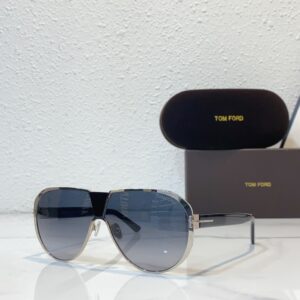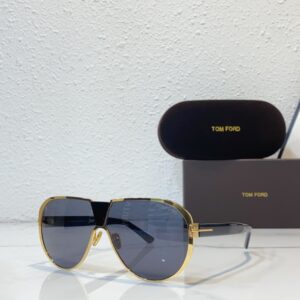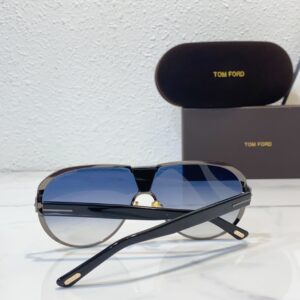Introduction to Eyewear Technology
The evolution of eyewear technology has been substantial over the years, transitioning from basic protective and aesthetic functions to the integration of innovative features that enhance user experience. Traditionally, sunglasses served the primary roles of protecting the eyes from harmful ultraviolet rays and reducing glare, while also making a fashion statement. However, the advancement of technology has urged a significant shift in consumer expectations of eyewear.
The advent of smart eyewear represents a milestone in this progression. This category of eyewear combines functionality with technology, incorporating various features such as audio capabilities, fitness tracking, and real-time notifications. Brands that have embraced smart eyewear have begun to create products that not only safeguard vision but also serve as multifunctional devices. The transition from conventional sunglasses to smart devices signifies a broader trend of personal technology becoming seamlessly integrated into daily wear.
As lifestyle demands have grown increasingly multifaceted, the eyewear sector has responded with innovations that make it easier for consumers to stay connected while enjoying the outdoors. Moreover, the integration of augmented reality into eyewear opens new avenues for enhancing both functionality and consumer engagement. With the ability to overlay digital information onto the real world, AR technology allows users to visualize various features and benefits directly through their eyewear.
The significance of this ongoing evolution is not merely technological but also cultural. Eyewear has evolved into an essential accessory that blends fashion and functionality, shaping the way individuals interact with their environments. As advancements in eyewear technology continue to unfold, understanding their implications for consumers and the industry as a whole becomes crucial. Embracing these innovations is pivotal for the future, influencing trends and altering perceptions on the role of eyewear in everyday life.
The Rise of Augmented Reality in Fashion
The fashion industry has witnessed a substantial transformation in recent years, largely driven by the incorporation of augmented reality (AR) technologies. These innovations have redefined traditional retail experiences, allowing consumers to engage with products in an immersive manner. AR facilitates a shift from conventional shopping methods to interactive and personalized experiences, enhancing customer satisfaction and engagement.
One of the most notable applications of AR within fashion is the virtual try-on feature, which enables shoppers to visualize how garments or accessories would look on them without the need for physical samples. Using a smartphone or a dedicated device, consumers can superimpose clothing or footwear over their image in real-time. This convenience not only saves time but also reduces the likelihood of returns caused by poor fit or unsatisfactory appearance.
Moreover, interactive shopping experiences powered by AR have gained traction in physical retail environments. For instance, some high-end boutiques now offer AR mirrors that provide customers with the ability to visualize various outfit combinations or color options without physically trying them on. This technology encourages exploration and can lead to enhanced decision-making, as it allows customers to experiment with styles that may have otherwise seemed unappealing.
These advancements in AR technology have also proven to influence consumer behavior significantly. With the increased ease of shopping through immersive experiences, retailers have observed higher conversion rates and customer retention. In essence, AR has not only modernized fashion retail but has also formed a critical component of an evolving marketing strategy aimed at attracting digitally savvy consumers. As we delve deeper into the future of eyewear technology, it becomes imperative to analyze how these innovations are finding their way into sunglasses shopping, an area ripe for transformation through augmented reality.
How Augmented Reality is Revolutionizing Sunglasses Shopping
The advent of augmented reality (AR) is profoundly transforming how consumers engage with sunglasses shopping. By allowing users to virtually try on various styles, AR technology enhances the purchasing journey, leading to more informed choices. One of the key features of AR is virtual fittings, enabling customers to see how different sunglasses will look on their faces without leaving their homes. This capability offers a personalized shopping experience, which is increasingly vital in a market driven by visual presentation and style preferences.
Brands like Ray-Ban and Warby Parker have effectively integrated AR into their platforms, enabling users to visualize sunglasses in real-time. Through smartphone applications or web interfaces, customers can select a pair of sunglasses, activate their device’s camera, and superimpose the eyewear over their own faces. This interaction not only provides a realistic depiction of how the glasses will look but also encourages users to engage more deeply with the brand, thus increasing customer satisfaction and loyalty.
Another significant advancement made possible by AR is personalized recommendations. By analyzing a user’s facial features and preferences, AR systems can suggest sunglasses that are likely to suit them best. This tailored approach helps to eliminate decision fatigue, as shoppers are presented with options catered to their unique styles. Furthermore, the ability to visualize different colors and styles instantly enhances the overall shopping experience, allowing consumers to experiment with various combinations until they find the perfect fit. This feature is not just advantageous for customers; retailers benefit as well. Enhanced customer engagement leads to increased conversion rates, while the reduced likelihood of returns further strengthens profitability for brands.
The integration of augmented reality in sunglasses shopping signifies a major shift towards an immersive and interactive consumer experience, merging convenience with personalization.
The Future Outlook and Challenges Ahead
The future of augmented reality (AR) in eyewear presents a multitude of opportunities for innovation, alongside notable challenges that must be addressed. As AR technology continues to evolve, significant advancements in functionality and user interface design are anticipated. These improvements are expected to enhance the overall consumer experience, making sunglasses shopping not only more immersive but also more interactive. By allowing consumers to virtually try on a vast selection of eyewear styles from the comfort of their homes, the retail landscape for sunglasses is poised for a remarkable transformation.
Moreover, the acceptance of smart eyewear among consumers is anticipated to grow as the technology becomes more sophisticated and user-friendly. Overcoming initial resistance to augmented reality applications in eyewear will require targeted education and marketing strategies that highlight the benefits, such as personalized shopping experiences and improved convenience. As consumers become more familiar with AR capabilities, the integration of smart features in sunglasses—such as lens tint control and display notifications—could further enhance appeal.
However, there are challenges that could hinder the widespread adoption of AR in eyewear. Foremost among these are privacy concerns, as consumers may be hesitant to embrace technologies that require data collection and tracking. Ensuring robust protections of personal information will be essential in building trust. Additionally, technical limitations, such as the need for stable internet connectivity and device compatibility, may restrict access to these innovative shopping solutions for some consumers.
In conclusion, the future of augmented reality in sunglasses shopping holds tremendous potential to create a more engaging and tailored experience. By addressing the existing challenges while harnessing technological advancements, the eyewear industry can pave the way for an exciting new era in consumer engagement and product personalization.



